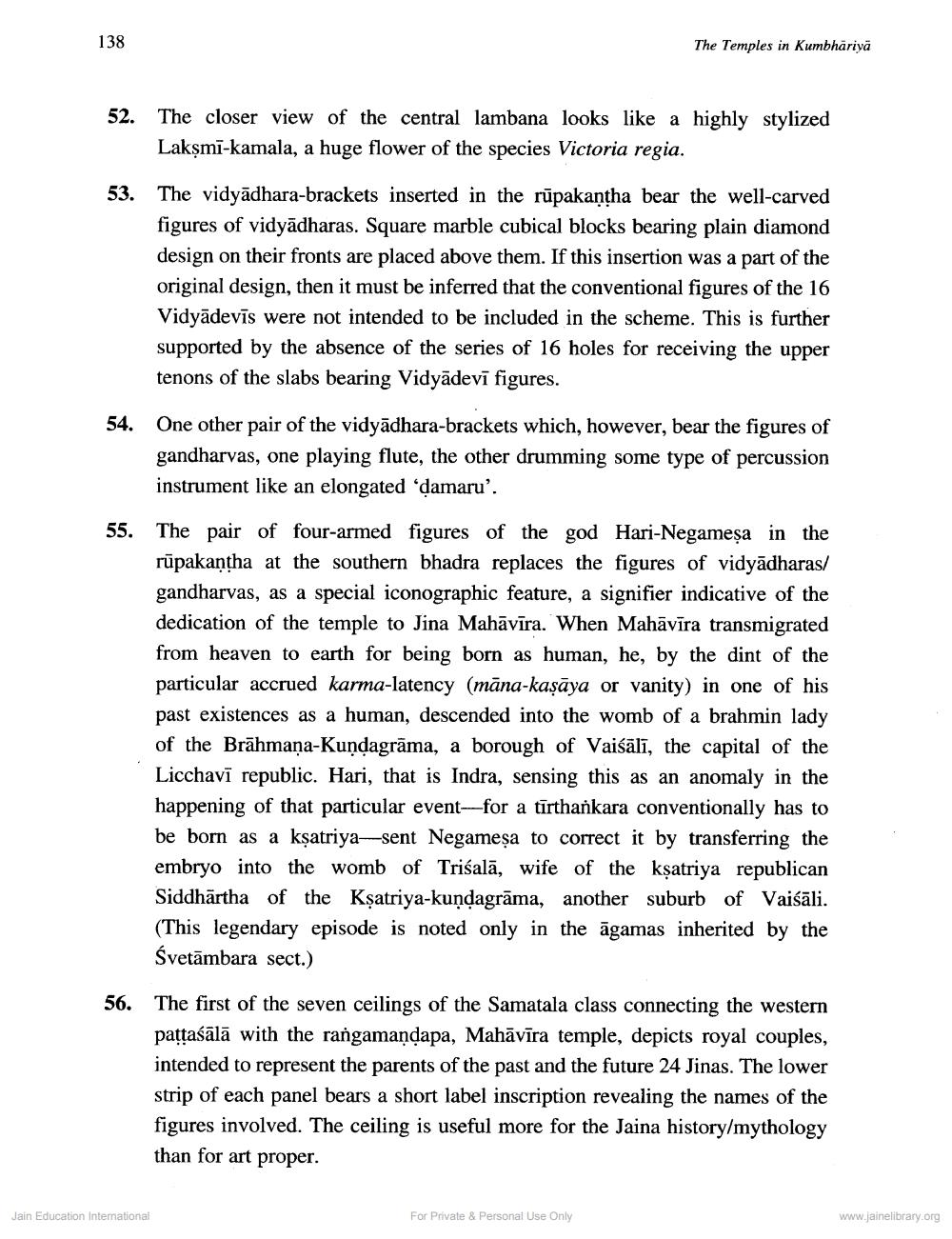________________
138
The Temples in Kumbhariya
52.
The closer view of the central lambana looks like a highly stylized Lakşmī-kamala, a huge flower of the species Victoria regia.
53.
The vidyādhara-brackets inserted in the rūpakantha bear the well-carved figures of vidyādharas. Square marble cubical blocks bearing plain diamond design on their fronts are placed above them. If this insertion was a part of the original design, then it must be inferred that the conventional figures of the 16 Vidyādevīs were not intended to be included in the scheme. This is further supported by the absence of the series of 16 holes for receiving the upper tenons of the slabs bearing Vidyādevī figures.
54. One other pair of the vidyādhara-brackets which, however, bear the figures of
gandharvas, one playing flute, the other drumming some type of percussion instrument like an elongated 'damaru'.
55.
The pair of four-armed figures of the god Hari-Negamesa in the rūpakantha at the southern bhadra replaces the figures of vidyādharas/ gandharvas, as a special iconographic feature, a signifier indicative of the dedication of the temple to Jina Mahāvīra. When Mahāvīra transmigrated from heaven to earth for being born as human, he, by the dint of the particular accrued karma-latency (māna-kaṣāya or vanity) in one of his past existences as a human, descended into the womb of a brahmin lady of the Brāhmaṇa-Kundagrāma, a borough of Vaiśālī, the capital of the Licchavī republic. Hari, that is Indra, sensing this as an anomaly in the happening of that particular event--for a tīrthankara conventionally has to be born as a ksatriya-sent Negamesa to correct it by transferring the embryo into the womb of Trisalā, wife of the ksatriya republican Siddhārtha of the Ksatriya-kundagrāma, another suburb of Vaiśāli. (This legendary episode is noted only in the āgamas inherited by the Śvetāmbara sect.)
56.
The first of the seven ceilings of the Samatala class connecting the western pattaśālā with the rangamandapa, Mahāvīra temple, depicts royal couples, intended to represent the parents of the past and the future 24 Jinas. The lower strip of each panel bears a short label inscription revealing the names of the figures involved. The ceiling is useful more for the Jaina history/mythology than for art proper.
Jain Education International
For Private & Personal Use Only
www.jainelibrary.org




